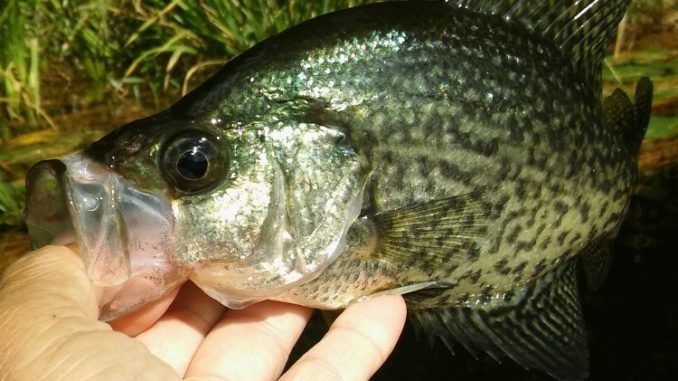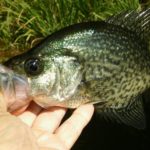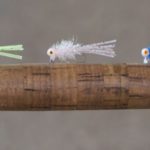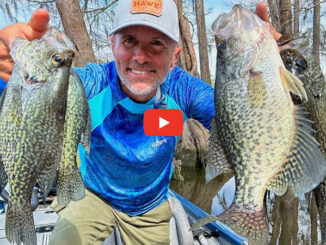
A prehistoric idea goes post-modern
Little is known about fly fishing before Dame Juliana Berner’s book “A Treatise of Fishing with an Angle” written in 1696.
However, thanks to the same folks at the History Channel who gave us absolute proof of the existence of ancient aliens, we now have an idea as to the origin of our sport.
It was 51,341 B.C. We know the exact year because archeologists found a calendar with that date marked. Caveman engineer Frank Oog was working on the circular wheel and spending his downtime fishing the local creek.
Frank’s fishing “rod” was a spear, which worked well except when the trout hid under a rock. Somehow, he had to entice them to come near the surface. Frank thought, “Mooga uga ut?” which is caveman for “Why not create a bug imitation to lure them out?”
So Frank set out to use fur, feathers and bronze to create the first fly. Frank made one mistake. He clipped fur from a wooly mammoth — while the mammoth was still alive.
Frank’s death made him the first fly-tying martyr. As such, the “wooly bugger” is named in credit to the beast that crushed him.
Such a silly story, right?
Guess what else is silly? A fly that matches the “tube jig hatch.” With a name like “Silli Butt,” it’s hard to take it seriously. In fact, fly-tying purists say it’s positively stupid to call it a fly.
What is a Silli Butt? It’s like a Fluff Butt, but with a tail made from a few strands of silicon legs instead of marabou. Branded as “Crazy Legs” or “Silli Legs,” this material is identical to the silicon skirts used by bass anglers for spinnerbaits.
There are a couple other differences from the common Fluff Butt. The Silli Butt is always tied on a jig head hook, usually 1/80- or 1/64-ounce.
The first Silli Butt I saw tied was some 20 years ago at a fly-tying festival in North Carolina. The tier called it a Tube Jig Fly and described it as a fly version of the popular crappie lure.
One thing that stood out was that, when cinched down with thread, the silicon strands flared out. It looked nothing like the tail on a tube jig.
I tied a few of these myself, and the flared tail did nothing to entice a bite.
Fast-forward to two summers ago.
One of my wife’s brothers-in-law, Marcus, asked to go fishing on the local lake. The bream were biting, so I rigged up a light spinning rod with a small cork and tiny tube jig for him to use.
I was using a fly rod with a small Fluff Butt under a strike indicator and getting numerous bites. The marabou tail of the Fluffie has such great action, it often entices a strike. At the very least a nibble. But that’s all I was getting — nibbles.
Meanwhile, Marcus was catching fish after fish on the tube jig. They’d nibble alright, then follow up with an eat!
My conclusion? To the fish, the plastic tail tasted “organic.”
Think about it. Isn’t that the reason plastic lures as a whole are so effective?
After that trip, I decided to revisit the Tube Jig Fly. At issue was how to keep the tail strands from flaring out. Thanks to UV epoxy, the problem was solved.
When tying the tails in, wrap tight near the head, but make a few loose wraps above the hook point. Then wrap back to the head. Add a tiny drop of UV epoxy over the loose wraps, then hit with the UV light for a couple seconds.
Another modification I made to the original was replacing the chenille body with Krystal Flash Chenille. This material matches the pearlescent look of a tube jig. After all, with this fly we’re “matching the commie hatch.”
While I’ve tied the Silli Butt on light jigheads for use under a strike indicator, I’ve found the 1/64-ounce version to be most effective fished solo on an 8-foot leader. Cast it out using an Inverted Loop Cast, let it sink down, then retrieve in a slow arcing sweep before stripping up.
Unlike the Fluff Butt, don’t set the hook if you feel a bite. Instead, slowly lift the rod tip up. A missed bite often leads to a second strike.
This past year, I landed more than 300 crappie on a Silli Butt, almost double what I caught on other flies. It also worked really well on redear sunfish. My best color combinations were pink/pink, olive/chartreuse, and blue/pearl.
Try this fly out, and release your inner silliness!




